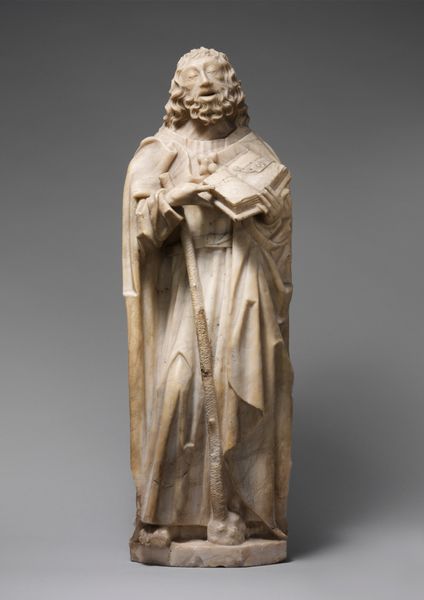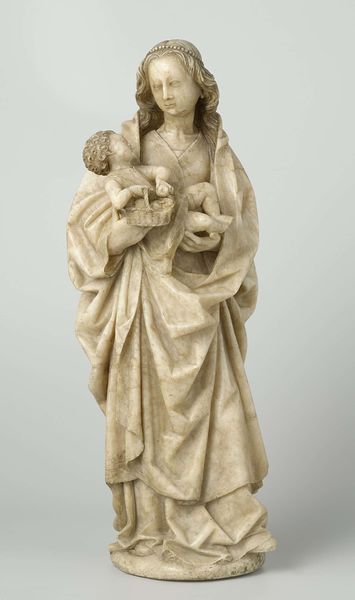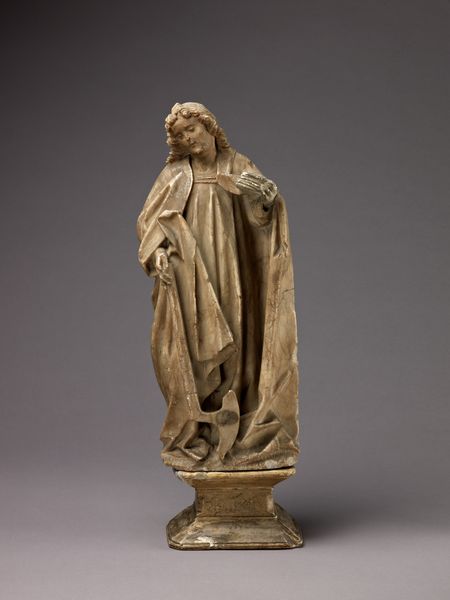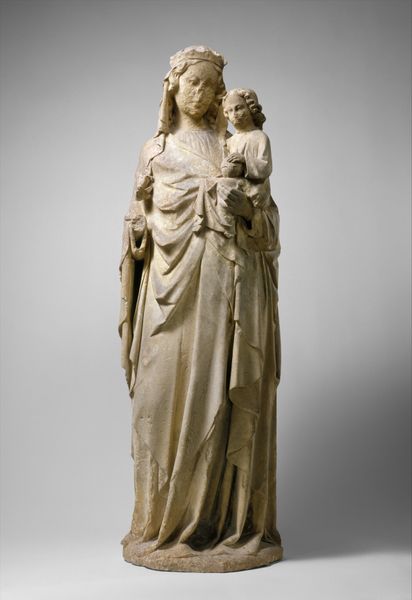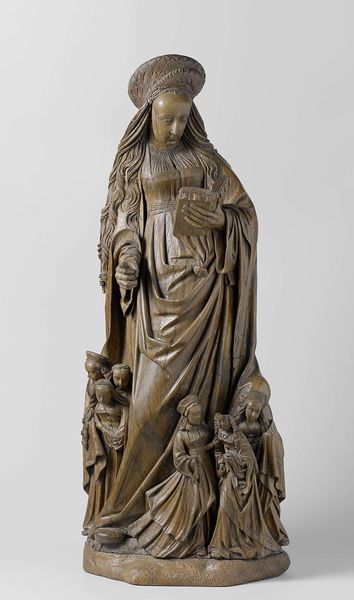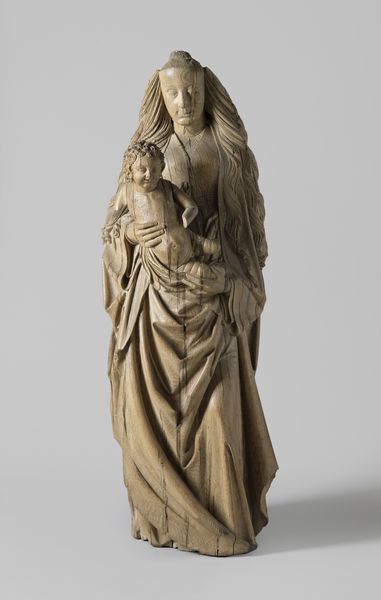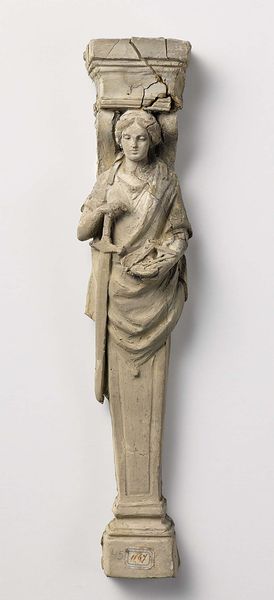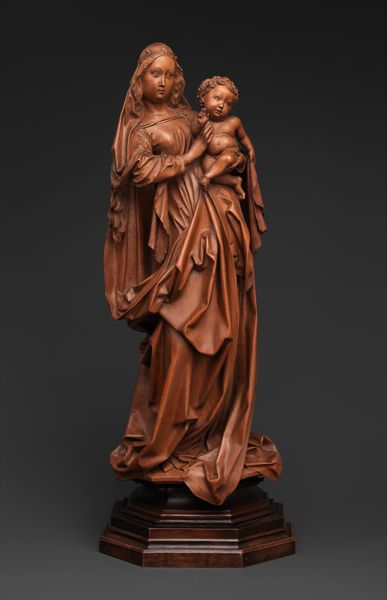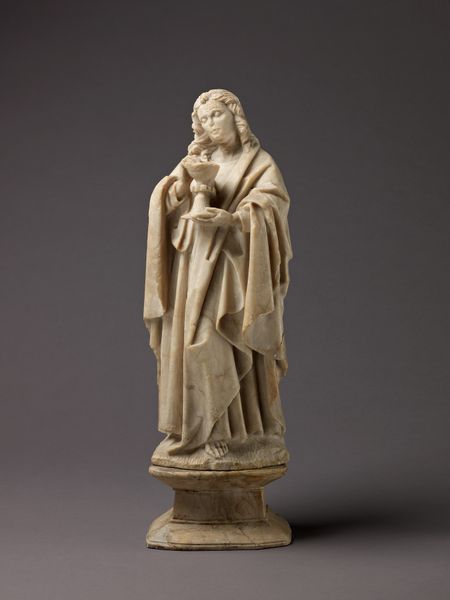
carving, sculpture, wood
#
portrait
#
medieval
#
carving
#
stone
#
sculpture
#
sculptural image
#
figuration
#
sculpture
#
men
#
wood
#
northern-renaissance
Dimensions: 18 1/16 × 6 7/8 × 4 15/16 in. (45.9 × 17.4 × 12.5 cm)
Copyright: Public Domain
Editor: We're looking at "Saint James the Greater," a late 15th-century sculpture by Gil de Siloe. It appears to be carved from either stone or perhaps even wood. It has a quiet, contemplative feel to it, and the robes create a strong vertical rhythm. What strikes you when you examine this piece? Curator: Indeed. Immediately apparent is the skillful manipulation of line and form. The cascading drapery, meticulously rendered, creates a play of light and shadow that enlivens the stone or wood. Note the subtle contrast between the smooth planes of the face and the textured rendering of the hair and beard, achieving a remarkable level of verisimilitude. Editor: I see that contrast now, especially around the face. The folds of the fabric look almost fluid, don't they? How does the composition guide our eye? Curator: Precisely. The figure's contrapposto stance, though subtle, introduces a dynamic tension. The verticality of the staff is echoed in the overall form, establishing a firm structure. Yet, this rigidity is tempered by the gentle curve of the body and the swirling patterns of the drapery. The sculptor understood how to manage the gaze using only form. Editor: So, it’s the interplay of these elements that makes the work so compelling. Curator: Exactly. The success of "Saint James the Greater" lies in its formal arrangement. The manipulation of materials and structure evokes a sense of dignified spirituality through artistic strategies rather than through simple, overt sentiment. We gain understanding by close looking. Editor: I see it now. The sculpture feels both solid and ethereal. Thanks, that's a fresh perspective. Curator: The pleasure is mine. The power of art is in the visual elements the artist sculpts into it and what that allows us to decipher through structured investigation.
Comments
No comments
Be the first to comment and join the conversation on the ultimate creative platform.

